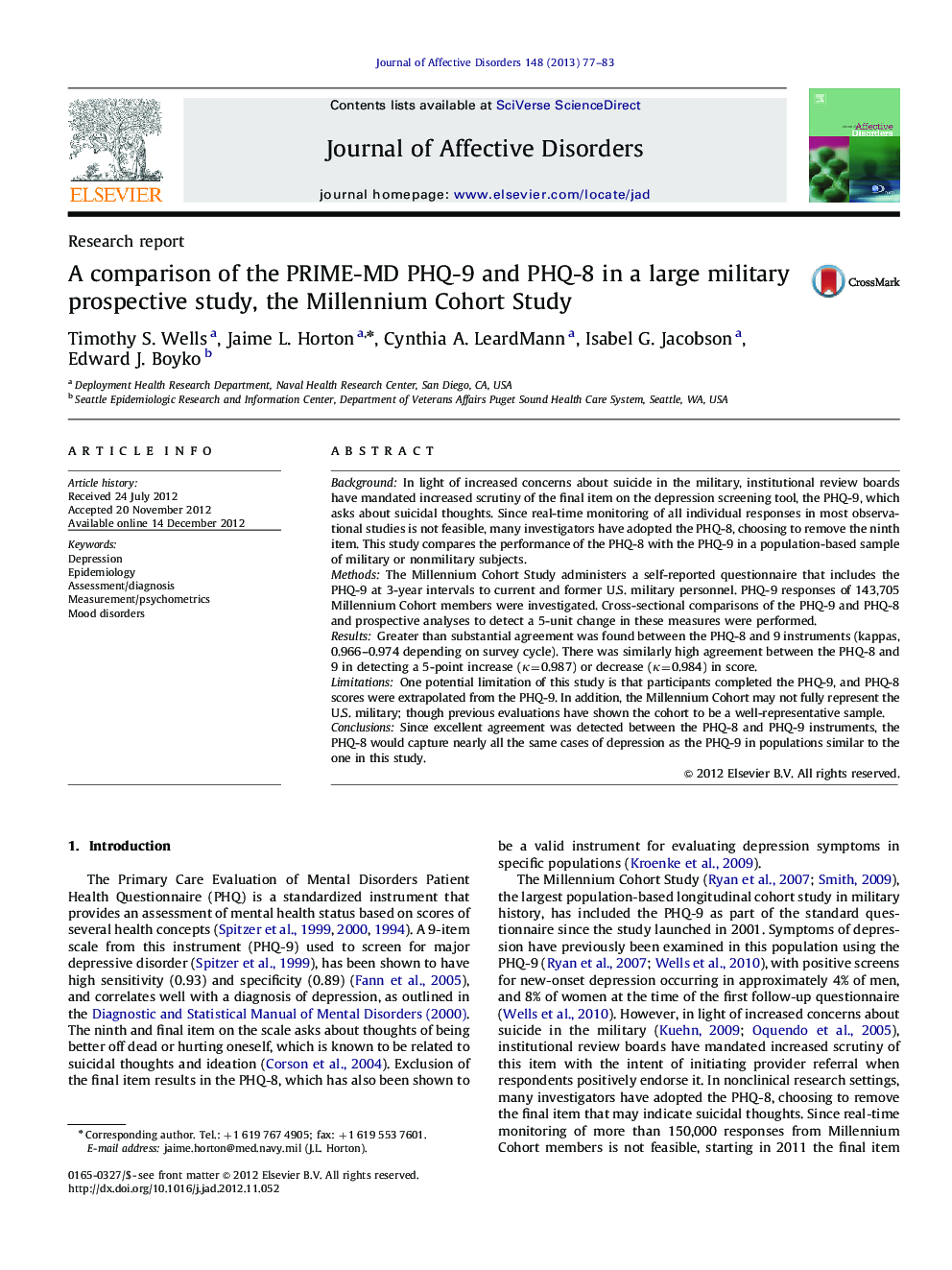| Article ID | Journal | Published Year | Pages | File Type |
|---|---|---|---|---|
| 6234524 | Journal of Affective Disorders | 2013 | 7 Pages |
BackgroundIn light of increased concerns about suicide in the military, institutional review boards have mandated increased scrutiny of the final item on the depression screening tool, the PHQ-9, which asks about suicidal thoughts. Since real-time monitoring of all individual responses in most observational studies is not feasible, many investigators have adopted the PHQ-8, choosing to remove the ninth item. This study compares the performance of the PHQ-8 with the PHQ-9 in a population-based sample of military or nonmilitary subjects.MethodsThe Millennium Cohort Study administers a self-reported questionnaire that includes the PHQ-9 at 3-year intervals to current and former U.S. military personnel. PHQ-9 responses of 143,705 Millennium Cohort members were investigated. Cross-sectional comparisons of the PHQ-9 and PHQ-8 and prospective analyses to detect a 5-unit change in these measures were performed.ResultsGreater than substantial agreement was found between the PHQ-8 and 9 instruments (kappas, 0.966-0.974 depending on survey cycle). There was similarly high agreement between the PHQ-8 and 9 in detecting a 5-point increase (κ=0.987) or decrease (κ=0.984) in score.LimitationsOne potential limitation of this study is that participants completed the PHQ-9, and PHQ-8 scores were extrapolated from the PHQ-9. In addition, the Millennium Cohort may not fully represent the U.S. military; though previous evaluations have shown the cohort to be a well-representative sample.ConclusionsSince excellent agreement was detected between the PHQ-8 and PHQ-9 instruments, the PHQ-8 would capture nearly all the same cases of depression as the PHQ-9 in populations similar to the one in this study.
